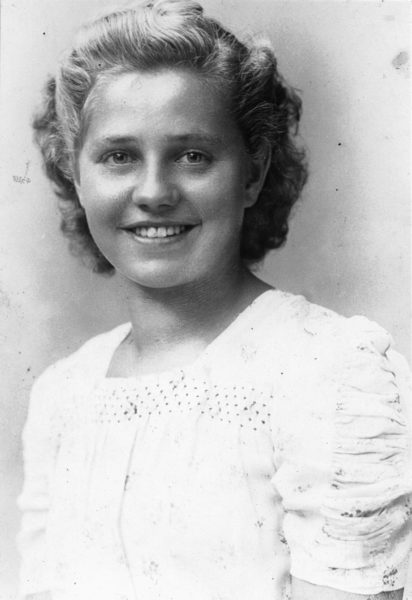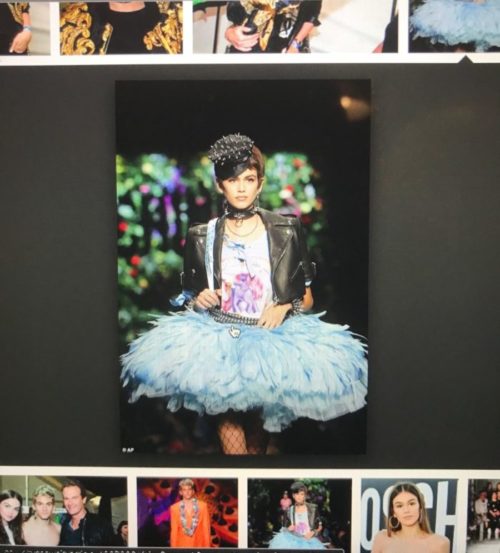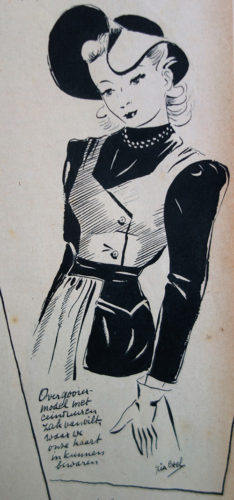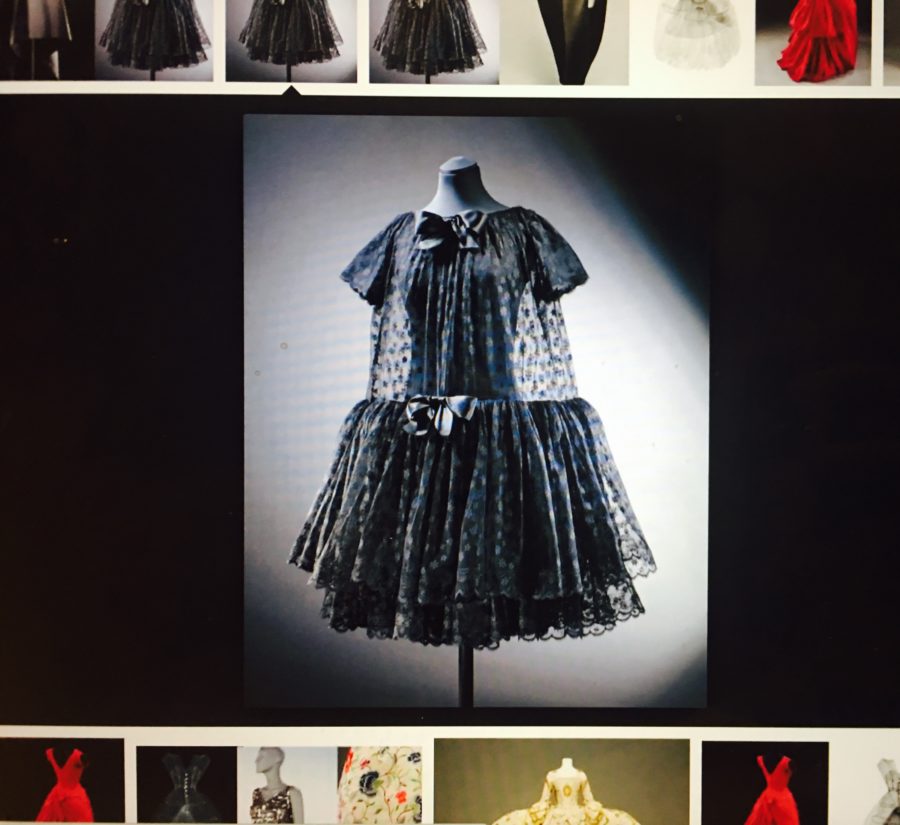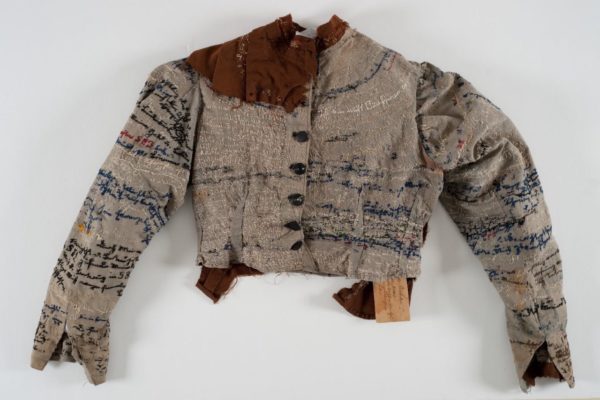A black-and-white photograph captures a young woman posed against a plain backdrop, smiling confidently. She wears a blouse made of a seemingly light-coloured fabric. The blouse’s gathered sleeves end just above her elbows, and its yoke appears to be punctuated by small dots in five horizontal rows. The handwritten caption under this photograph, found glued into an album, not only identifies this young woman, but also ‘identifies’ the blouse by revealing its materials and how it was made. Moreover, it reveals that this woman is both the wearer and the maker of the garment. Originally in Dutch, the caption states: ‘Corrie in self-made blouse with smocking in parachute fabric from English aviator’.
‘Corrie’, short for ‘Cornelia’, is my maternal grandmother. She was born in 1925 as the eldest daughter and the third of six children. Her family lived in a small village in the south of the Netherlands. As a young girl, Corrie learned how to sew. Decades later, I remember Corrie, known to me as my grandmother, as having an eye for the intricate details of clothing – the quality of the material, the cut, the construction and the finish. Her appreciation of and interest in textiles and clothing, and how to make them, must have been hereditary. It runs like a thread through my family, from my grandmother to my aunts and mother, to my younger sister and me.
Before she married my grandfather Nel in 1950, my grandmother completed commissioned pieces in addition to making clothes for herself and her family. However, because of the years of textile rationing during the Second World War, none of her original pieces have remained. The earliest surviving self-made garment is her wedding dress, which after her death in 2011 was passed on to my mother. The blouse she wears in the aforementioned black and white photograph has disappeared. I did not even know about its existence until a few months ago, when I discovered this photograph in a photo album compiled by my grandmother’s younger sister, Nellie.
I brought it to our ‘Documenting Fashion’ seminar on ‘History and Memory,’ for which we had to bring a personal dress-related object. I had read before about garments made of so-called ‘parachute silk’ during and right after the Second World War. For instance, Dominique Veillon, in her book Fashion under the Occupation (2002), writes about the case of Vichy-France (1940–1944). During shortages of clothing and its raw materials, “any piece of cloth or the like was a godsend.” Veillon points to the emergence of a “fairly widespread fashion” for clothing made out of parachute silk among women close to the Resistance, even though this was risky because it revealed one’s links with the Resistance and the Allied Forces.[1] And Julie Summers in her book Fashion on the Ration (2016) about wartime fashion in Britain, writes: “Almost every woman who was alive at the time remembers either acquiring some [parachute] silk or having seen a garment made from it, and it was indeed considered to be a wartime luxury.” [2] However, Summers notes that “[a]lthough so many people claim to have had parachute silk, few can remember how to acquire it.”[3]
After finding the photograph of my grandmother, the stories about parachute silk garments suddenly became more personal. My grandmother, still a young girl during Germany’s occupation of the Netherlands (1940–1945), at some point had acquired parachute silk and made it into a blouse for herself and, as a second photograph of Nellie confirms, for her sisters (Figure 2). A handwritten comment on a piece of paper accompanying Nellie’s photograph states “1943?”, but this date remains unconfirmed.

I am currently trying to unravel this history further. The only remaining source is Cileke, my grandmother’s youngest sister. The story goes that the fabric for these blouses was salvaged from the parachute of an English aviator shot down not too far away from where my grandmother’s family lived. Having an uncle active in the Dutch Resistance might possibly explain how my grandmother managed to acquire such material. I would love to learn more about this material’s status in the specific context of the Netherlands during the Second World War. Was it forbidden to own this material? Was it dangerous to wear a garment made of it during the occupation?
The photograph of my grandmother in her parachute silk blouse has evoked many questions; some are broader, relating to wartime history, and others are personal, relating to my family’s personal history. Unravelling dress-related (and family) history can be hard when time has passed and the wearer is not alive anymore, and indeed, even the garment is gone. Nevertheless, this photograph makes me feel connected to my family. And although black-and-white, it adds more colour and depth to a topic that I have been interested in for a while, namely dress during the Second World War.
By Nelleke Honcoop
[1] Dominique Veillon, Fashion under the Occupation (Oxford: Berg, 2002), 137–38.
[2] Julie Summers, Fashion on the Ration: Style in the Second World War (London: Profile Books, 2016), 137.
[3] Summers, 138.

